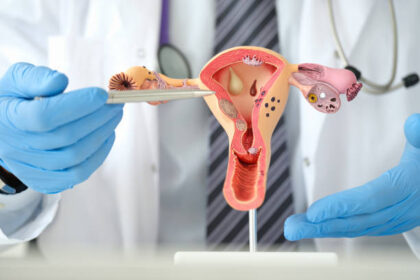When a child suddenly begins experiencing severe behavioral changes, obsessive-compulsive symptoms, or motor and eating disturbances, it’s natural for parents to feel overwhelmed and confused.
In rare but serious cases, these symptoms may be signs of PANS or PANDAS — neuropsychiatric disorders that are often misunderstood and frequently misdiagnosed.
Understanding what these conditions are, how to recognize the symptoms early, and where to seek professional help (such as from holistic care providers like Level Up Wellness Group can make a significant difference in the child’s recovery.
What Are PANS and PANDAS?
PANS (Pediatric Acute-onset Neuropsychiatric Syndrome) and PANDAS (Pediatric Autoimmune Neuropsychiatric Disorders Associated with Streptococcal Infections) are conditions that cause sudden and severe neuropsychiatric symptoms in children, often following an infection.
PANDAS is specifically triggered by Group A streptococcal (strep) infections, leading to autoimmune responses that affect the brain.
PANS is broader and can be triggered by other infections (e.g., Lyme disease, Mycoplasma), environmental factors, or metabolic issues.
Both conditions are part of a group of disorders where the immune system misfires and begins attacking healthy brain tissue, particularly in areas responsible for emotion and movement (like the basal ganglia).
Core Symptoms of PANS and PANDAS
The hallmark of PANS and PANDAS is the sudden onset of symptoms, often within 24 to 48 hours. This distinguishes them from other developmental or psychological disorders, which typically develop gradually.
1. Obsessive-Compulsive Behavior (OCD)
Children may suddenly develop intense, irrational fears or compulsive rituals. For example:
Excessive hand washing
Repeating actions or phrases
Extreme fear of contamination
2. Severe Anxiety or Panic Attacks
Previously calm children might begin experiencing:
Social withdrawal
Panic episodes
Irritability or extreme mood swings
3. Motor Abnormalities
These may include:
Tics (involuntary movements or vocalizations)
Jerky movements
Trouble with coordination or handwriting (dysgraphia)
4. Food Restriction or Eating Disorders
Some children refuse to eat, fearing contamination, choking, or vomiting. This can result in:
Rapid weight loss
Nutritional deficiencies
Eating behavior regression
5. Cognitive and Behavioral Regression
Parents may notice:
Difficulty with math, reading, or writing
Trouble focusing or remembering things
Bedwetting or regressing to earlier developmental stages
6. Sleep Disturbances
Insomnia, night terrors, or frequent waking during the night are common.
Diagnosing PANS and PANDAS
Unfortunately, PANS and PANDAS are clinical diagnoses, meaning there is no definitive test to confirm them. Diagnosis typically involves:
Reviewing the child’s medical history
Ruling out other psychiatric or neurological conditions
Identifying recent infections or immune triggers
Doctors may run blood tests for strep (ASO titer or anti-DNase B) or look for signs of inflammation or autoimmune response.
Because symptoms can resemble autism, Tourette’s, ADHD, or anxiety disorders, early recognition and specialized evaluation are crucial.
Causes and Triggers
The exact mechanisms behind PANS and PANDAS are still under study, but known or suspected triggers include:
Group A Streptococcal infection (specific to PANDAS)
Mycoplasma pneumonia
Influenza and other viral infections
Lyme disease or tick-borne illnesses
Environmental toxins
Metabolic imbalances
Once triggered, the immune system produces antibodies that mistakenly attack brain cells, causing inflammation and neurological dysfunction.
Why Early Intervention Matters
The earlier a child with PANS or PANDAS receives care, the better the chances of preventing long-term effects. Without treatment, symptoms may worsen or become chronic, severely impacting:
Education and learning
Social development
Family relationships
Emotional health
Misdiagnosis often leads to unnecessary psychiatric medication or behavioral therapies that don’t address the root cause.
Treatment Options
PANS and PANDAS require a multidisciplinary treatment approach. Successful care usually includes:
1. Antibiotics or Antivirals
To eliminate the underlying infection, especially in PANDAS cases caused by strep.
2. Anti-inflammatory or Immunomodulatory Therapies
These include:
NSAIDs (like ibuprofen)
Steroids (short-term)
IVIG (Intravenous Immunoglobulin)
Plasmapheresis in severe cases
3. Psychiatric Support
Cognitive-behavioral therapy (CBT), especially Exposure and Response Prevention (ERP), may help manage OCD and anxiety.
4. Nutritional Support and Holistic Therapies
Diet and gut health support
Supplements (e.g., Omega-3s, probiotics)
Detoxification therapies
This is where a wellness center like Level Up Wellness Group can provide holistic, child-centered support that integrates medical and therapeutic interventions under one roof.
Supporting a Child with PANS or PANDAS at Home
Be Patient and Empathetic
Remember: Your child isn’t choosing to behave this way. These behaviors are symptoms of inflammation in the brain.
Structure and Routine
Predictability helps ease anxiety and build confidence. Maintain regular sleep and meal schedules.
Advocate in School
Work with educators to implement Individualized Education Plans (IEPs) or accommodations during flare-ups.
Keep a Symptom Journal
Track mood changes, triggers, and responses to treatments. This data can help your care team adjust the treatment plan.
Why Multidisciplinary Care Matters
PANS and PANDAS don’t just affect mental health — they disrupt the entire system: neurological, immune, behavioral, and physical. This is why isolated treatment approaches often fall short. A multidisciplinary team — like the integrative professionals at — provides a whole-child approach by addressing:
The immune root causes
Behavioral symptoms
Nutritional deficiencies
Psychological and emotional support
These holistic teams often include physicians, naturopaths, therapists, dietitians, and family support professionals.
Long-Term Outlook
With early intervention and appropriate care, many children with PANS or PANDAS can recover fully or experience significant improvement. Some may continue to have periodic flare-ups, especially during immune stress (like illness), but these can often be managed effectively with a supportive care plan.
Final Thoughts
No parent wants to see their child struggle with sudden emotional or behavioral changes. But recognizing the signs of PANS and PANDAS can open the door to early, effective intervention — and real hope for healing. If your child is showing signs of sudden OCD, anxiety, or motor difficulties after an infection, it’s time to seek help from professionals who understand this complex condition.
Level Up Wellness Group provides integrated, compassionate care tailored to the unique needs of children with PANS and PANDAS. To learn more about available treatments and get started with a multidisciplinary team, visit luwg.ca.









